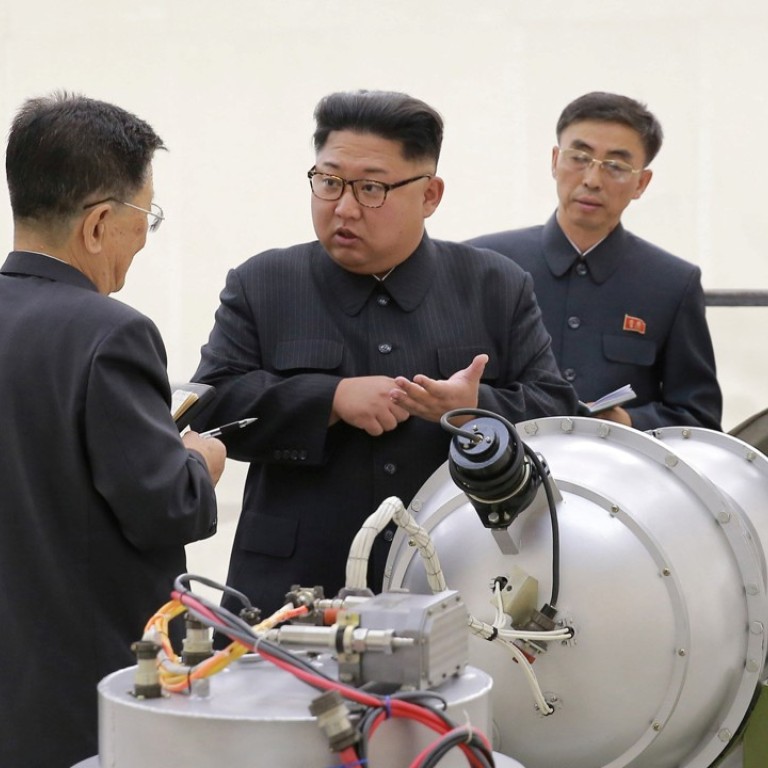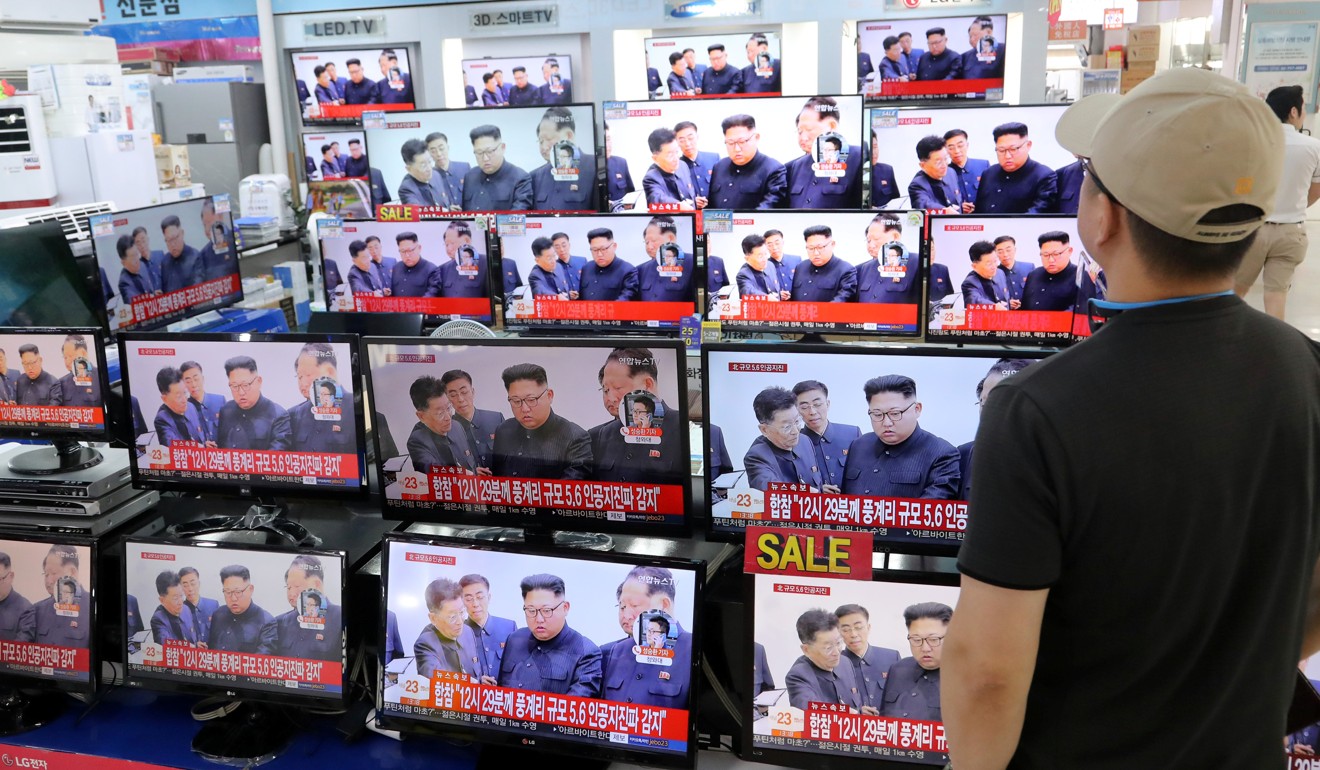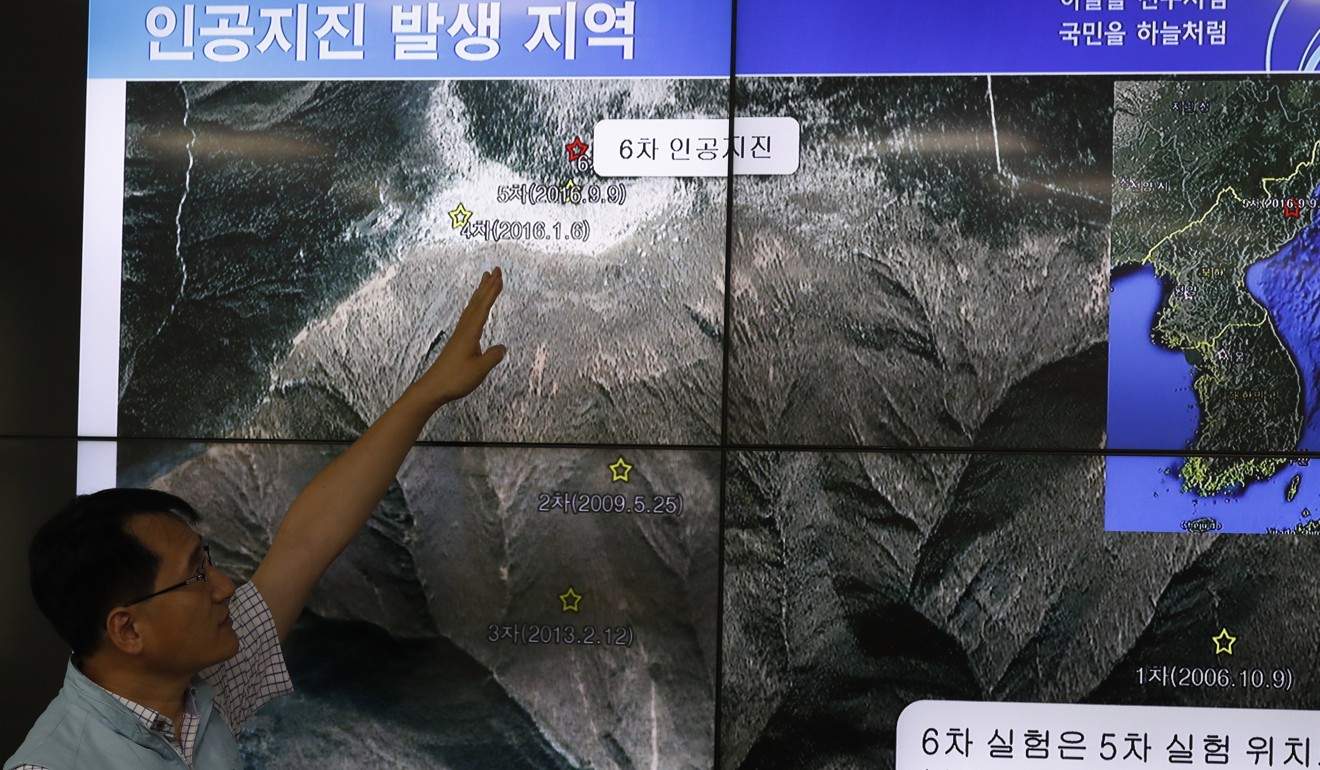
Why North Korea’s latest nuclear test suggests it is close to its goal of a miniature H-bomb
Size of earthquake caused and pace of development suggest Pyongyang is close to developing thermonuclear device that would fit into missile
North Korea’s latest nuclear test suggested it was highly possible that it possessed powerful hydrogen bomb technology and could be close to being able to miniaturise that to fit into a missile warhead, according to Chinese nuclear experts.
The test on Sunday morning caused two quakes – the first at magnitude 6.3, which was followed eight minutes later by one measuring 4.6 – near its Punggye-ri underground test site in a remote area in the northeast of the country.
North Korea later claimed it had successfully tested a miniaturised hydrogen bomb that can be loaded onto an intercontinental ballistic missile.
Pyongyang has also conducted a series of missile tests recently that suggest it may have developed weapons capable of striking US territory.

The magnitude 6.3 earthquake suggests the explosion had a yield of 300 kilotons TNT, which is large enough to be a hydrogen bomb, a nuclear physicist working at a government-backed institute told the South China Morning Post on condition of anonymity because he was not authorised to speak on the matter.
The second quake, whose amplitudes were 60 times smaller than the first one, is likely to have been the result of the collapse of a cavity in the underground test site or a tectonic aftershock caused by the explosion, the nuclear physicist said.
Zhao Tong, an expert in nuclear policy programmes at the Carnegie-Tsinghua Centre of Global Policy, also said the scale of the explosion matched the shape and size of an H-bomb model shown in photographs released by North Korean state media KCNA a day before the test.
In the photos Kim Jong-un is shown inspecting a model of a miniature hydrogen bomb.
A hydrogen bomb’s main explosive power comes from the nuclear fusion of hydrogen nuclei.
But a primary fission reaction device – an atomic bomb – is needed in the first stage to produce the X-rays and heat needed to trigger the fusion reaction.
The time lag between the two reactions is only a few milliseconds.

Zhao said after five previous tests, North Korea would have become capable of developing a hydrogen bomb on its own.
“It is not too fast to have a successful H-bomb explosion on the sixth attempt. North Korea has a complete nuclear industry and it has accumulated enough expertise and know-how in the technological process and production parameters to overcome difficulties in design and production,” he said.
The physicist said the China had managed to work out how to develop a hydrogen bomb 32 months after it successfully built the atomic bomb in the 1960s without electronic computers.
“For anybody who has already had the A-bomb, the H-bomb is basically a matter of computing,” he said. “It’s not really surprising if North Korea has made it.”
In January 6 2016, North Korea’s fourth nuclear test, which generated a seismic shock of around magnitude 4.9, was described in official propaganda as a hydrogen bomb.
But outside experts believed it was more likely to be a boosted atomic bomb that contained deuterium or tritium, isotopes of hydrogen that produce a lot more neutrons to accelerate the fission chain reaction.
“With a small amount of fusion materials, the size of the trigger part can be greatly reduced,” he said.
“That’s the key to the miniaturisation of the thermonuclear weapon,” he added. “If North Korea knows how to make a boosted A-bomb, then it can soon pass the threshold of miniaturisation.”

